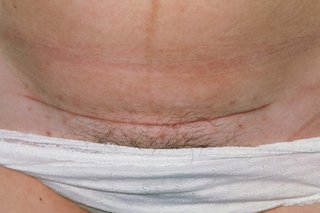Recovery
You'll probably be in hospital for 1 or 2 days after a caesarean section, and may need to take things easy for several weeks.
Recovering in hospital
Most women can leave hospital 1 or 2 days after having a caesarean section.
While in hospital:
- you'll be given painkillers to reduce any discomfort
- you'll have regular close contact with your baby and can start breastfeeding
- you'll be encouraged to get out of bed and move around as soon as possible
- you can eat and drink as soon as you feel hungry or thirsty
- a thin, flexible tube called a catheter will remain in your bladder for at least 12 hours
- your wound will be covered with a dressing for at least 24 hours
When you're well enough to go home, you'll need to arrange for someone to give you a lift as you will not be able to drive for a few weeks.
Looking after your wound
Your midwife should also advise you on how to look after your wound.
You'll usually be advised to:
- gently clean and dry the wound every day
- wear loose, comfortable clothes and cotton underwear
- take a painkiller if the wound is sore – for most women, it's better to take paracetamol or ibuprofen (but not aspirin) while you're breastfeeding
- watch out for signs of infection
Non-dissolvable stitches or staples will usually be taken out by your midwife after 5 to 7 days.
Your scar

DR P. MARAZZI/SCIENCE PHOTO LIBRARY https://www.sciencephoto.com/media/290186/view
The wound in your tummy will eventually form a scar.
This will usually be a horizontal scar about 10 to 20cm long, just below your bikini line.
In rare cases, you may have a vertical scar just below your bellybutton.
The scar will probably be red and obvious at first, but should fade with time and will often be hidden by your pubic hair.
On darker skin, the scar tissue may fade to leave a brown or white mark.
Controlling pain and bleeding
Most women experience some discomfort for the first few days after a caesarean, and for some women the pain can last several weeks.
You should make sure you have regular painkillers to take at home for as long as you need them, such as paracetamol or ibuprofen.
Aspirin and the stronger painkiller codeine present in co-codamol is not usually recommended if you're breastfeeding.
Your doctor will be able to advise you on the most suitable painkiller for you to take.
You may also have some vaginal bleeding.
Use period pads rather than tampons to reduce the risk of spreading infection into the vagina, and get medical advice if the bleeding is heavy.
Returning to your normal activities
Try to stay mobile and do gentle activities, such as going for a daily walk, while you're recovering to reduce the risk of blood clots. Be careful not to overexert yourself.
You should be able to hold and carry your baby once you get home.
But you may not be able to do some activities straight away, such as:
- driving
- exercising
- carrying anything heavier than your baby
- having sex
Only start to do these things again when you feel able to do so and do not find them uncomfortable. This may not be for 6 weeks or so.
Ask your midwife for advice if you're unsure when it's safe to start returning to your normal activities.
You can also ask a GP at your 6-week postnatal check.
When to get medical advice
Contact your midwife or a GP straight away if you have any of the following symptoms after a caesarean:
- severe pain
- leaking urine
- pain when peeing
- heavy vaginal bleeding
- your wound becomes more red, painful and swollen
- a discharge of pus or foul-smelling fluid from your wound
- a cough or shortness of breath
- swelling or pain in your lower leg
These symptoms may be the sign of an infection or blood clot, which should be treated as soon as possible.
Page last reviewed: 1 August 2019
Next review due: 1 August 2019